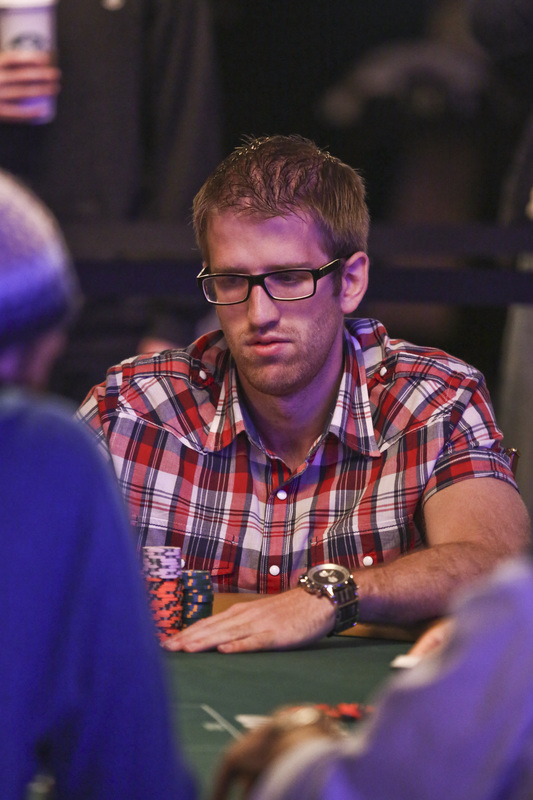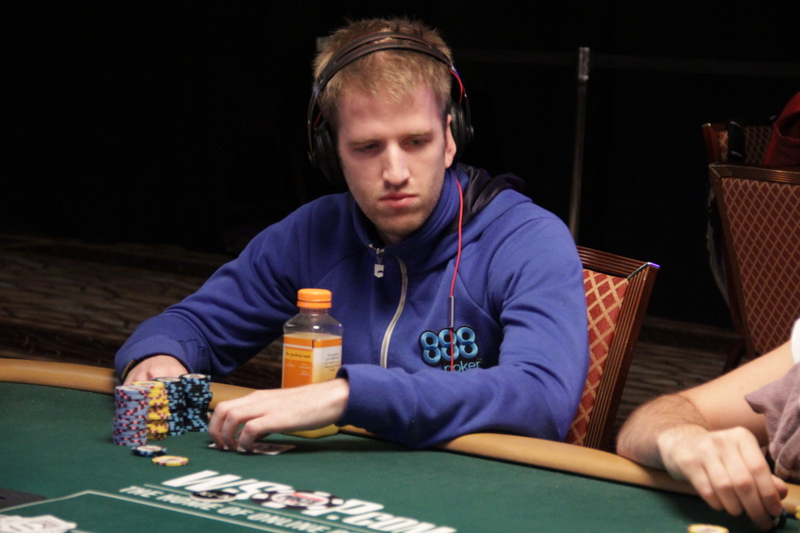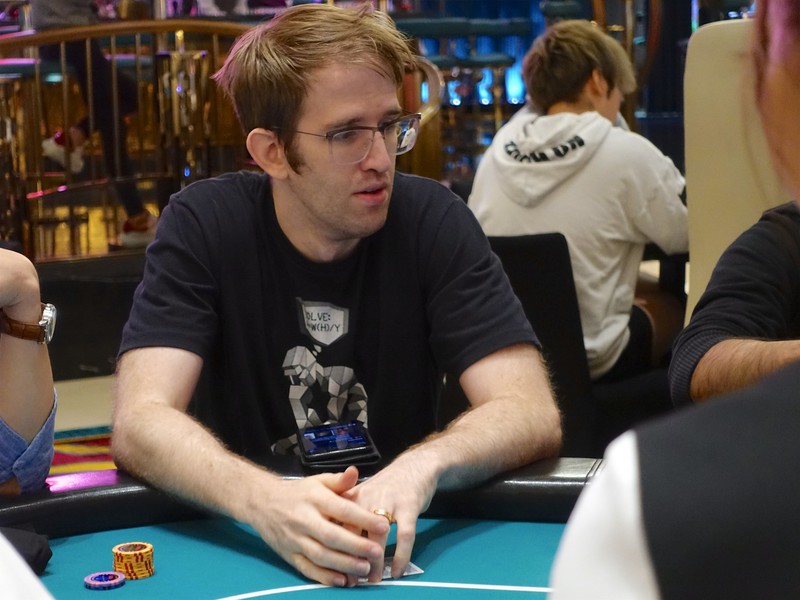






Poker Strategy With Russell Thomas: Optimal Preflop PlayWSOP Main Event Final Tablist Shares His GTO Approach |
|
|

Russell Thomas Credit: WPT
Beyond that, if preflop play is incorrect, players will find themselves getting to later streets with hands that shouldn’t be in their range. As poker strategy evolved, many of the game’s best players began focusing on what was game theory optimal and used “solvers” to help them improve their game from a theoretical standpoint.
Having racked up nearly $3.85 million in live tournament earnings, as well as significant success online, poker pro Russell Thomas understands just how important the first street of the game is to having success. The Pennsylvania native made his mark in the poker world with a fourth-place finish in the 2012 World Series of Poker main event for $2.8 million, which jump-started his career.
He went on to become a successful regular in high-stakes events all over the world, including a pair of wins in high roller events in Asia, as well as a final table in the 2013 AUD$10,000 WSOP Asia Pacific main event in Australia. Thomas’ wife, poker pro Kitty Kuo, is also very accomplished on the circuit with more than $2.5 million in earnings, including final table appearances at the Aussie Millions and on the World Poker Tour.
The former actuary partnered with close friend, fellow poker pro, and runner-up finisher from his WSOP main event final table, Jesse Sylvia, to launch Floptimal. Their product is a piece of software that allows poker players of all skill levels to get more familiar with any preflop situation they may encounter. It’s designed to make new players more comfortable both at the table and with the new game theory optimal approach to poker.
Floptimal.com allows its users to access an interface that displays optimal preflop strategy for all types of hands, positions, and stack depths in easy-to-digest visualizations and grids.
Thomas sat down with Card Player to discuss several aspects of preflop strategy and why it is essential to turning a profit at the table.
Steve Schult: During the heyday of the poker boom, preflop strategy was far from solved and there were many players who would openly advocate for taking -EV spots preflop because their post-flop edge was so massive. Why is preflop strategy so important now?
 Russell Thomas: If you’re making consistent mistakes, where you’re either playing too little or too many hands against certain actions on the table, it’s going to add up to a significant amount of lost EV. It’s very important to get your preflop strategy down so you’re not leaking [expected value] and you’re not getting post-flop with hands that you shouldn’t be playing to begin with.
Russell Thomas: If you’re making consistent mistakes, where you’re either playing too little or too many hands against certain actions on the table, it’s going to add up to a significant amount of lost EV. It’s very important to get your preflop strategy down so you’re not leaking [expected value] and you’re not getting post-flop with hands that you shouldn’t be playing to begin with.
The player pools have improved substantially both preflop and post-flop over the past ten years, so I think there is a stronger case for playing a strong theoretical preflop strategy. The argument about giving up some EV preflop because you have a post-flop edge has some merit in soft fields. I can definitely see some logic to that where maybe you don’t want to take a high variance spot where you only have a very small edge to call off your stack. You’d rather preserve your stack, especially in a tournament where you have an edge post-flop and the field is not particularly tough.
But in general, especially in tougher tournaments, I’ve found you just want to play as GTO as possible preflop and then make adjustments towards your opponents if you have information to justify it. It should also be pointed out that knowing the optimal solutions preflop will allow you to adjust to your opponents better, because you know what the baseline strategy is.
SS: If you have flaws in your preflop game, how does that affect you for the rest of the hand? For example, if you’re defending too many hands from the blinds, does that leave you open to certain exploits from your opponents?
RT: If you have a good understanding of preflop, you’ll understand what your opponents’ ranges look like in different spots, and that’s going to inform your post-flop decision making. Whereas, if you have an incorrect view of the types of hands that someone will have in a spot, you may be executing the wrong post-flop strategy.
Most amateurs are leaking massive amounts of EV preflop. If these amateurs were able to execute some of the preflop strategies on Floptimal they would improve greatly.
Some common mistakes I see from amateurs are…
Not open raising wide enough, especially from late position.
Playing way too tight vs open raises from all positions.
Playing way too loose vs open raises.
Three-betting so infrequently that their three-bets are transparently strong. Observant professional players will adjust to this player by playing tight and proceeding with caution.
Not defending the blinds properly.
These mistakes add up and cost amateurs a lot of money in tournaments. Post-flop is obviously very important as well.
SS: You said that you generally stick to rigid preflop strategies derived from computer simulations. And that you only deviate from what is optimal in your post-flop game. But how are those ranges created? What concepts is the computing using to create them?
 RT: Solvers are basically a computer program that we use to generate preflop charts. What we do is we set up assumptions for preflop and post-flop and we get the results from the computer’s simulations. For our website, we used MonkerSolver to generate our preflop solutions.
RT: Solvers are basically a computer program that we use to generate preflop charts. What we do is we set up assumptions for preflop and post-flop and we get the results from the computer’s simulations. For our website, we used MonkerSolver to generate our preflop solutions.
For preflop, we’re setting up bet size parameters. Like how big can players raise? What are the three-bet sizes? What are the four-bet sizes? Stuff like that. We have to set up the preflop game-tree to allow what combinations of actions can occur before the flop. We had to decide whether to allow players to limp preflop from certain positions.
Basically, you set up this preflop game tree for the eight players at the table, and then you have to set up other assumptions for post-flop as well, which is what bet sizes can be used post-flop? Then the solver runs through all the hands and comes up with the optimal strategy. I don’t know the exact mechanics about how the solver is actually calculating it, but it’s all centered around building a preflop and post-flop game tree, and then it solves the optimal solution in terms of preflop ranges.
SS: So, it basically runs through entire hands and then comes back with which hands should be played from the start based on theoretical results.
RT: Exactly. Based on what game tree and bet sizing assumptions we used, the program will generate solutions for us.
SS: I wanted to touch on stack depth with you. How do deeper stacks affect hand selection? Are there hands that are playable at 50 big blinds that aren’t playable at 20? Or 100?
RT: One of the big patterns is that at shorter stacks, at 20 blinds, you should be opening tighter than you would be at 50 blinds. At 20 blinds, you face more all-in raises than you do when you are deeper stacked.
Your opponents can go all in for 20 blinds and there’s going to be your two big blind raise plus the blinds, so there is four and a half in the middle. When someone re-raises you all in for 20 blinds, there is a decent risk-reward ratio there where they win 4.5 blinds if you fold. So what ends up happening is that at 20 blinds, the optimal solutions for preflop ranges are a bit tighter because if you start raising too wide, the hands on the margin just aren’t profitable anymore because they face too many reraises where they have to fold.
Whereas when you’re deeper stacked, you don’t face reraises as often and the reraises aren’t all in. So it’s possible you’ll be able to call the three-bet depending on your hand. Whereas versus the all-in, you just need the raw equity to call it off. And a lot of the hands don’t have the equity to do that, which tightens the preflop ranges. But once you get above 30 blinds, the ranges start expanding a bit because there aren’t as many all-in raises occurring, so it becomes profitable to raise more hands.
SS: Is 20 big blinds where you’re considered short stacked? Old school poker strategy was essentially that once you have 10 big blinds, your only play was to go all in. There was no more open raising. Has that number changed?
RT: The line when you start playing shove-or-fold poker? That is around 10 big blinds. At 11 and 12, you can min-raise as the open raiser, but below 10, you should still probably just be going all in.

RT: The biggest differences between cash games and tournaments for preflop strategy is that in cash games, there’s rake, which means that a percentage of the pot is paid to the house. We’ll also assume there is no ante since most cash games don’t have one.
Rake essentially decreases your EV for calling preflop. So, if someone raises in the cutoff and you call on the button, and you play this pot, five percent of this pot (with a cap) is going to go to the house. Your EV in this hand is a little bit less, strictly because of the rake. And what that does is it directly reduces the amount of hands you can profitably play.
What ends up happening in cash games is, the solver prefers three-betting versus raises instead of calling. Now, it does mix in calling in a lot of spots as well, but there’s a lot more three-betting going on because of the rake, and because there’s no ante.
What the ante does is affect your pot odds. Without an ante, your pot odds are worse to call a raise. So, if someone raises to two and a half blinds, you have to call two and a half to win their two and a half plus the one and a half in there from the blinds. It’s 2.5 divided by 6.5, so it comes to like 37% equity needed to breakeven.
If there was an ante in there you’d only need 33%, and the difference between 37% and 33% changes the number of hands you can actually play. The difference in pot odds that you’re actually getting actually tightens the game up quite a bit moving from tournament to cash games.
And when you three-bet and your opponent folds, you actually don’t pay any rake in most casinos and online sites. So that’s one of the added reasons why three-betting is more preferred in cash games in a lot of spots.
Like an eight-handed game with no ante in cash should be played substantially tighter. If you were to compare button raises, the GTO ranges are to raise around 41% in cash games and in tournaments with antes, the button raise range can be greater than 50% of hands. You can see there’s a big gap in the number of hands you play. And then versus opens as well, you’re just playing much wider in tournaments.
Versus a hijack raise, you’re playing 26% of hands on the button, and in cash, you are playing 15% of hands. So it’s just literally wider from every spot in tournaments at reasonable stack sizes.
SS: At what stack depth in tournaments does the strategy become the most complex? Is it as simple as the deeper you are, the more complex because you have more options at your disposal?
 RT: In general, the game gets more complicated the deeper you are. Because at 20 blinds you can go all in preflop. Like, if there is a raise and then your best play is simply to go all in, you had to make one decision, and the decision wasn’t that difficult.
RT: In general, the game gets more complicated the deeper you are. Because at 20 blinds you can go all in preflop. Like, if there is a raise and then your best play is simply to go all in, you had to make one decision, and the decision wasn’t that difficult.
But when you’re 200 blinds deep, the game gets really complicated, especially post-flop as you find yourself in spots where you’re not as comfortable putting all your chips in. The shorter you are, the less strong a hand you need to put all your money in post-flop. If you’re only 20 blinds deep, and you flop top pair in a single raised pot, generally all the money should be going in.
Whereas if you’re 200 blinds deep, and you’re in a three-bet pot, and you have top pair, you can’t be putting all your money in. So, your decisions get very difficult. Do you call the big barrel on the turn? Are there certain rivers you call? It’s very difficult to play perfectly 200 big blinds deep because the decisions get very complicated. ♠
